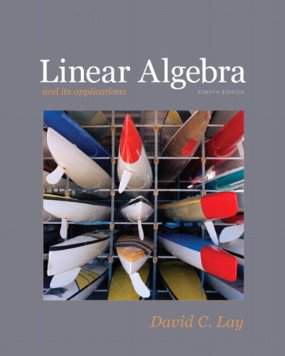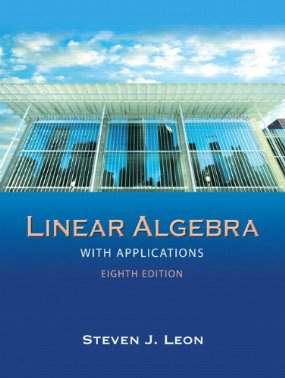Connecting...

This is a quick preview of the lesson. For full access, please Log In or Sign up.
For more information, please see full course syllabus of Linear Algebra
For more information, please see full course syllabus of Linear Algebra
Linear Algebra Vector Spaces
Lecture Description
This video will be very thick with proofs as vector spaces are one of the conceptual parts of linear algebra; be sure to take breaks along the way and re-watch any part that you don’t fully understand. Vector spaces can be visualized as a ‘plane’ where the vectors in question reside. If you increase the magnitude of a vector in anyway (multiplying by a constant, adding same-space vectors, etc.), then the result will be a vector that falls in the same space as the beginning vectors. Make sure you understand what a vector space is, because the next few videos will deal with properties of vector spaces and subspaces.
Bookmark & Share
Embed
Share this knowledge with your friends!
Copy & Paste this embed code into your website’s HTML
Please ensure that your website editor is in text mode when you paste the code.(In Wordpress, the mode button is on the top right corner.)
×
Since this lesson is not free, only the preview will appear on your website.
- - Allow users to view the embedded video in full-size.
Next Lecture
Previous Lecture










































 Answer Engine
Answer Engine




1 answer
Tue Sep 24, 2013 3:07 PM
Post by Christian Fischer on September 24, 2013
Hi Professor :) just a quick question: In example 2, would it be correct to say that the conclusion is as follows "Under our 2 constructed operations the set of all ordered triples (x,y,z) (Which are our set of elements) do not form a vector space because it did not satisfy the property (f)" So the collection of objects, (x,y,z), did not satisfy the list of properties. If my understanding correct?
Thank you for the great work
Christian.
0 answers
Post by Manfred Berger on June 15, 2013
With regards to my previous question: I just checked,it's a pretty little one-liner not an axiom. Thank you
1 answer
Sat Jun 15, 2013 1:30 PM
Post by Manfred Berger on June 14, 2013
Doesn't 1d at 9:19 require the inverse to be unique?
1 answer
Tue Nov 13, 2012 2:07 AM
Post by Badr Kilani on November 11, 2012
I am still confused, what shall i do ?
I solve a question from my book " Linear algebra, Jim Defranze, Dan Gagliardi " Ex: 3.1 1.
And still i couldn't understand it 100% What advices can you give me professor to do
1 answer
Sun Oct 7, 2012 2:39 PM
Post by Suhaib Hasan on October 5, 2012
Just out of curiosity, is it possible that nothing exists in a certain vector space? Like a 0 vector space or something?